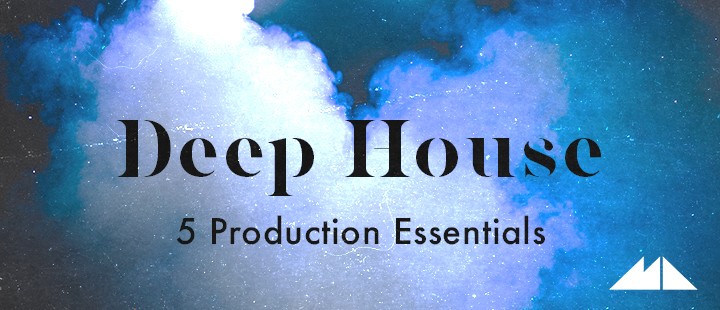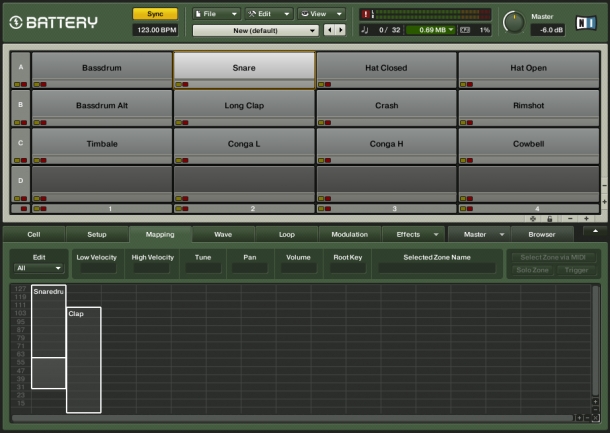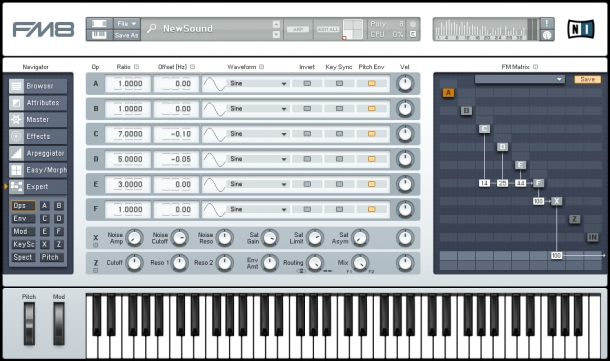
Welcome to the next part in my tutorial series exploring the production secrets of the biggest genres around! This time, we're going to take a look at one of the richest, darkest and most contemplative styles you're likely to encounter on a night out: Deep House.
Below, I've distilled Deep House production down to five essential elements. Mastering these will see you well on the way to producing tracks that hover flirtatiously above the border between night-club banger and headphones-on dreamworld - you'll also be able to download some free drum samples and MIDI files at the bottom of the article!
1. Tempo
Deep House is a highly varied genre, and as such, quite a wide range of tempi are employed across the spectrum. I tend to find that 123 Bpm is a nice starting point, as you can nudge the tempo up or down depending on the sorts of sounds you end up using, or on how complex the higher percussive parts get.

Most Deep House tempi are in and around the 120-126 Bpm range, and less occasionally below the 120 Bpm mark. However, it is more common to find tracks running at up to 130 Bpm, particularly at the more commercial end of the spectrum.
Here's a 123 Bpm Deep House groove from the more organic side of the genre's spectrum, with a live drumming feel:

2. Beats & Rhythms
Example MIDI files and Massive presets are available for free download at the bottom of the page
The rhythmic structure of Deep House is quite classic in the way that different drum parts are laid out across the main drum loop. That is to say, there is a four-on-the-floor kick, with snares on beats 2 and 4. The off-beats, on every other 1/8 note, are typically marked with open hi-hats, whilst closed hi-hats flutter and skit across the high end on every 1/16 note not already occupied with an open hat, filling out the space. Here's a typical example:
That being said, it is the way this basic rhythmic template is embellished that really lets the originality of the producer shine through. Rimshots, clipped or alternative snares, stabs and small percussion sounds, etc., are added in highly syncopated positions within the loop to inject some funk, and respond to the main groove as driven by the bass line.

The basic, 1/4 note kick pattern of Deep House can be developed with added hits at key points in the track. It's perhaps a little cliché to double up the kicks to 1/8 notes in the final bar before a new section, lift or drop, but the technique does wonders for building excitement and making the track's form satisfying. Use the technique in a more interesting way to anticipate the adding or removal of a layer, perhaps at an unexpected point.
Everyone expects some shifting of the layers at the 16-bar mark, but messing with your listeners' expectations and dropping some 1/8 note kicks crossing the bar line and resolving onto the 16 | 2 mark, for example, can make for the kind of surprise that makes your productions stand out. Accenting the end of a 4-bar loop with an extra kick towards the end of the last bar is another good trick to vary the rhythm a little.
You can get your experiments started by raiding our selection of key and tempo-labelled MIDI files, bursting with Deep House groove and swagger, or by pick up our Lo Life - LoFi House Loops pack.

3. Sounds: Drum Samples
The main groove in a Deep House track is created by the interplay between the bass line, rhythmic embellishments in the drums and synth/ keys parts. Once we have the notes and groove schematic sketched out, it's time to start finessing the sounds.
Deep House drums tend to be based on the sound palette we all know from the famous Roland TR-909 drum machine (which you can pick up as part of our Beat - Drum Machine Samples pack), or TR-808. For the kick, I tend to use a medium-length decay, with the attack portion of the hit having a short, downwards pitch envelope. If the kick's amplitude envelope is too short, it'll sound like Micro House, and if it's too long, it'll sound like Trap. You'll know it when you hear it!
Snares tend to be a little bigger in more commercial Deep House. I prefer to start with a noisy, burst-type sound - either enveloped white noise, a 909 clap or the snare from a Boss DR100. On top of this, we can add character using a sampled tambourine, for example, and tie the layers together using bit crushing.
Have a listen to the demo for our Crush - LoFi Drum Samples for a taste of some classic, driven House drum flavours:
Be sure to check out our full selection of banging, royalty-free drum samples to satisfy all your 4-to-the-floor rhythmic needs!

4. Sounds: Basses & Chords
Bass sounds in Deep House tend to either be quite forward in the mix - working almost as a riff - or more muted, underpinning the groove. The difference here is one of timbre, or tone.
More forward bass sounds contain more harmonics - so using FM synthesis is a good way to achieve this sound. In Native's FM8, for example, we could modulate the carrier operator with ratios at odd-integer multiples of the carrier frequency. This will give the bass a lot of higher harmonics, which we can filter after the attack portion of the note, giving us a rounded bass sound.
Backgrounded bass sounds in Deep House tend to be sine waves, or rather saw waves filtered to the point of almost being sine waves. As an alternative, I like to use two slightly detuned square waves, heavily filtered to near-sine wave quality - NI's Massive or Xfer Records' Serum synths are good choices to use for this purpose. Here's an example of a chunky, syncopated House bassline:
House music then throws up a plethora of melodic options for what sits on top of the bassline, but one musical element which almost invariably features is a synth chord progression. Further, these progressions are typically arrangements of 2 to 4 parallel chords, meaning they're all of the same harmonic flavour e.g. major 7 or minor 9 chords. I've explored this more fully in another tutorial which you can read here.
Again, Massive and Serum are great choices for cooking up your House chord progressions, and often you can simply record using your MIDI keyword or pencil in using your DAW's piano roll a single chord, from which you can copy and transpose to different root notes to form a 4 or 8 bar pattern - this simple 2 chord progression, Em9 to Bm9, demonstrates well what I mean here:
To help get you started, we've created a stunning array of basses, leads, pads and more in our synth presets collection, ready to slot straight into your projects for easy experimentation.

5. Subliminal Messaging - Background Parts
One of the most important aspects of Deep House is the sheer amount of background sound. These parts add depth, variety and 'lift' to tracks, whilst not really being something that the listener is expected to actively listen to.
I'm talking about things like quiet synth arpeggios which are added during the second 16-bar round of a 32-bar section, a second shaker part which only appears on the repetition of a section, or absorbing, atmospheric sound beds that bathe the entire track in mystery.
These kinds of tricks are almost a psychoacoustic engineering of the listening experience, and in Deep House, they can be the crucial difference between a fresh sound and a tiresome one.

They work by subtly shifting the ensemble of sounds that the track delivers when we have come to build expectations based on what has already been heard.
Spaces that were there have been filled, but as the addition of these new layers coincides with other major events in the structure of a track, they are not so noticeable. The effect is that energy and excitement within a track are heightened almost subliminally. Consider all the background plucks and subtle melodic elements present in this audio file:
This technique isn't exactly new - Motown producers knew very well the benefits of adding some judicious sparkle at key junctures, usually with large numbers of small percussion overdubs. However, it is the great number of these overdubs, and how you group and deploy them, that lets you really play with musical tension.
Arps, small percussion, field recordings and Ambient washes can all be snuck in singly, and then cut or re-added in new combinations to sculpt the ideal arc of musical excitement across the length of a track. You can find these elements and more in our royalty-free library of sounds, here.
I hope you've enjoyed my insights into Deep House production - you can take a closer look and listen with our own Massive Deep House presets pack, Dark Waves, or Submerge - Vital Deep House Presets, for some instant production juice to get you started.
Essential Listening
Here are 5 Deep House track classics to get you in the mood, and try to pick out the production techniques and musical features we've highlighted above to help aid your understanding and inspire your own music!
1. Larry Heard - Can You Feel It
2. Theo Parrish - Lost Angel
3. Moodymann - I Can't Kick This Feeling When It Hits
4. Leon Vynehall - It's Just (House Of Dupree)
5. Kerri Chandler - Downtown














